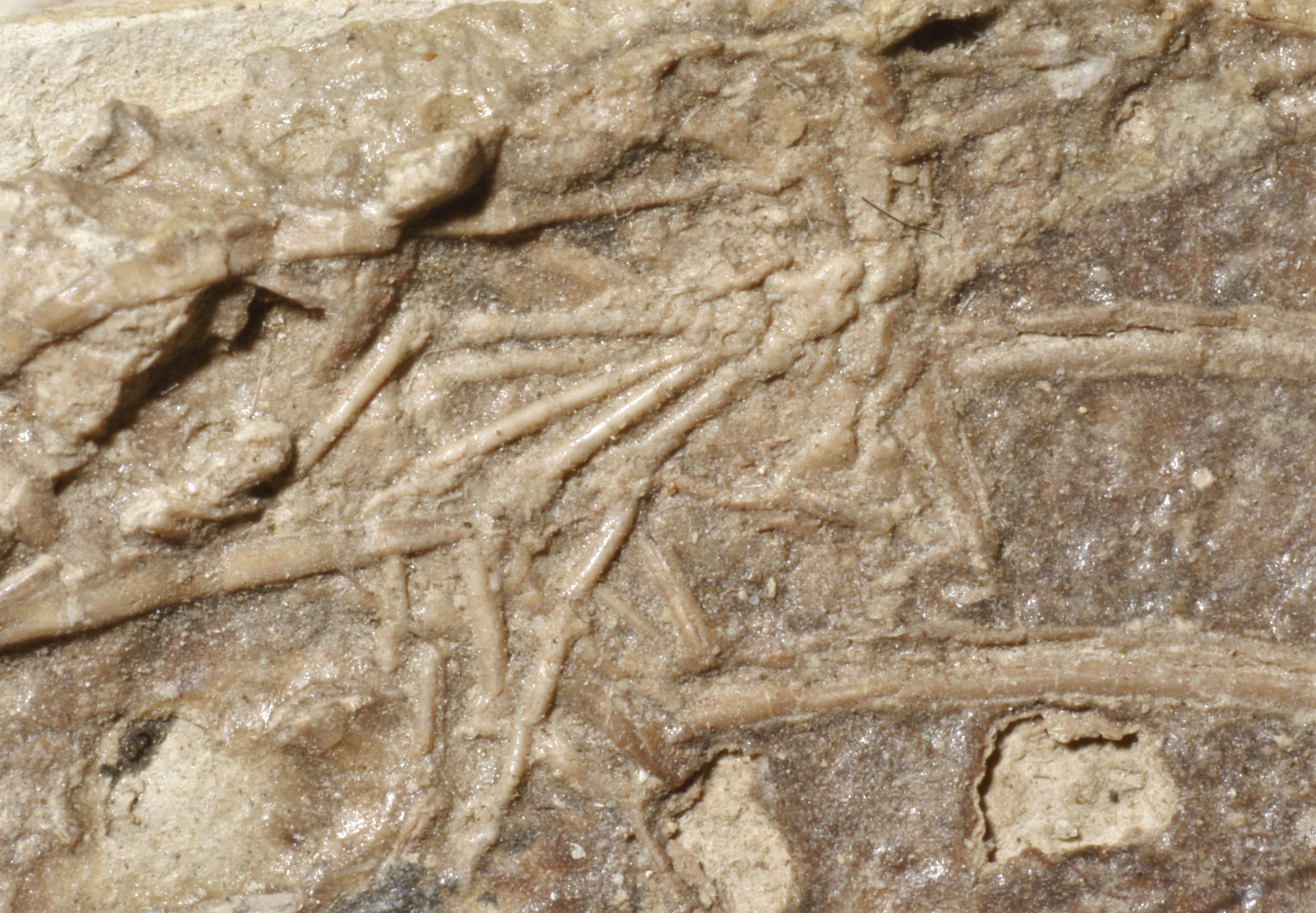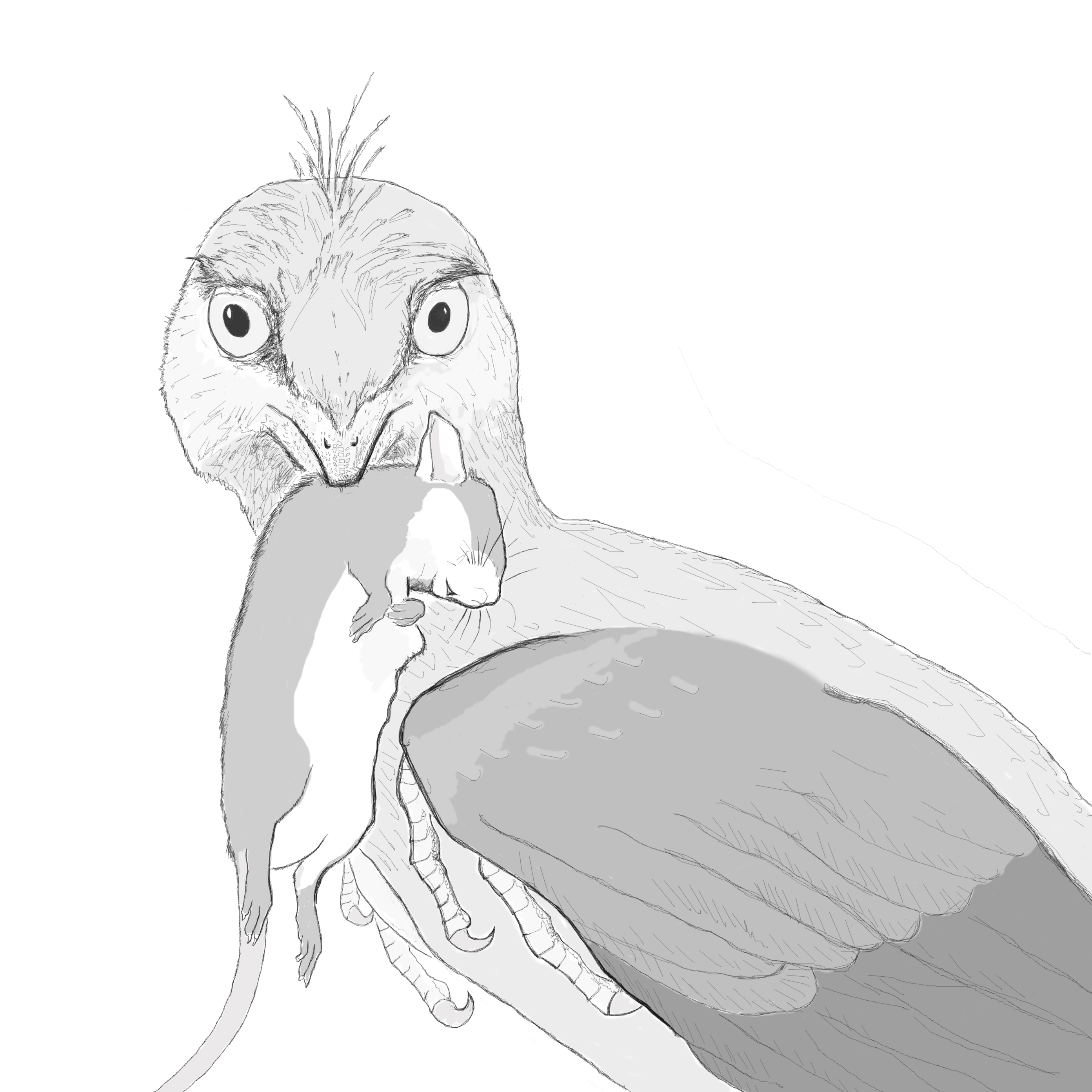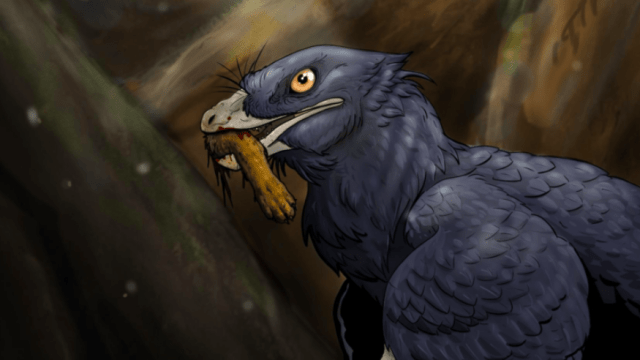Paleontologists taking a second look at a species of small, four-winged dinosaur have found a fossilized mammalian foot in the predator’s stomach.
It’s the first concrete evidence of dinosaurs eating mammals, the researchers say. Specimens of the dinosaur, Microraptor zhaoinus, have been discovered containing ancient birds, fish, and lizards, so the mammalian find is just the latest known source of protein for this spunky hunter. The team who re-scrutinised the Microraptor fossil published their findings today in the Journal of Vertebrate Paleontology.
“It really demonstrates the generalist diet in this small feathered dinosaur,” said Hans Larsson, a paleontologist at McGill University and the study’s lead author, in an email to Gizmodo. “Adding mammals to the menu shows just how un-specialised this dinosaur was.”
The tree-dwelling Microraptor lived during the early Cretaceous, and specimens have been found across what is now northeast China. The fossil-rich region is called the Jehol Biota, and its well-preserved treasures are a great resource for understanding nuances of dinosaur anatomy, as well as details about different animals’ ecological niches.
Microraptor is thought to have lived in trees, gliding around the Cretaceous forests looking for morsels on branches as well as on the ground. The recently studied specimen is the holotype, meaning it was first of its species to be found and named. It’s only recently been revisited after its discovery back in 2000. The new analysis revealed the mammalian foot — a seemingly unprecedented find.

The researchers couldn’t identify the particular mammal species, but the foot’s preservation within Microraptor allowed them to understand its ecological niche and, obviously, its predators.
“Gut contents are amazing snapshots into the diet of fossil animals, but they are so rare that it can be difficult to figure out whether the preserved ‘last meal’ represents the animal’s normal diet or a weird, one-off event that lucked into getting fossilized,” said Stephanie Drumheller-Horton, a paleontologist at the University of Tennessee, Knoxville, who was not affiliated with the recent paper, in an email to Gizmodo.
“Microraptor is shaping up to be a very interesting exception to that rule, with multiple, beautifully fossilized specimens preserving different ‘last meals,’” Drumheller-Horton added. “Taken together, the authors make a compelling case that this little theropod wasn’t a particularly picky eater, eating all sorts of small-bodied animals in its environment.”

The mammal foot apparently did not belong to a distant human ancestor; the team said it had similarities to the morphologies of Sinodelphys, Yanoconodon, and Eomaia, all ancient species of early mammals that looked roughly like opossums or rodents.
The foot belonged to an animal about the size of a mouse. The team’s analysis found the critter wouldn’t have been a good climber — an indicator that Microraptor may have occasionally swooped down to the forest floor for feeding.
“The foot seems completely intact, and thus was swallowed whole. How much of the mammal was swallowed is unknown,” Larsson said. “However, there were several other unidentified bones around the foot in the rib cage, so I suspect that more of that mammal was consumed.”
The researchers could not determine whether the animal was hunted and killed or if the feathered dinosaur had scavenged its body.
Given the luck paleontologists have had with the Jehol Biota so far, it may just be a matter of time before another meal-laden specimen offers more insights about the Cretaceous food scene.
More: A Shark, Eating a Squid, Eating a Lobster, in One Fossil
